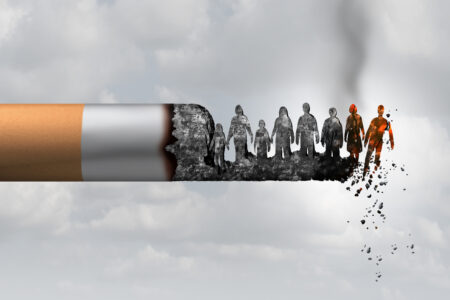
Share On Social!
As temperatures increase to scorching new benchmarks every year, weather experts advise people to avoid prolonged exposure to extreme heat, which can have disastrous health consequences, from heat stroke to death.
But not everyone can escape the heat’s harmful effects.
Heat can create hazardous working conditions for workers in labor-heavy outdoor industries, such as construction, maritime, and agriculture, which employs many Latinos.
To protect outdoor workers from extreme heat, the Department of Labor and the Occupational Safety and Health Administration (OSHA) are proposing a new rule to require employers to implement a heat emergency response and planning procedure, which includes providing water, shaded areas, and rest breaks.
“Workers all over the country are passing out, suffering heat stroke and dying from heat exposure from just doing their jobs, and something must be done to protect them,” Doug Parker, assistant secretary for OSHA, said in a statement.
Here’s your chance to speak up in support of workers’ rights.
Submit a model comment created by Salud America! to address the new standard that protects Latinos and all workers from the heat!
January 2025 Update: OSHA received 27,004 comments regarding providing heat protections for workers and 306 of those comments came from Salud America! members who submitted a model comment.
The comment period ended on Dec. 30, 2024.
Submit This Model Comment for Heat Protections for Workers
Dear OSHA,
I’m writing to express my support of the Department of Labor and OSHA’s proposed rule that would grant federal heat protections to outdoor and indoor workers across the country.
As concerns mount over climbing temperatures, the need for reform is becoming more apparent and no one is more vulnerable to the changing climate than our laborers, including construction workers and farmworkers, which serve as an integral part of our thriving economy.
However, I must bring attention to the fact that Latinos, who make up a large portion of the labor force that stands to benefit from this rule, have been greatly impacted by the lack of federal heat protections.
Latinos currently make up 17% of natural resource laborers (agriculture, forestry, fishing, and hunting) and account for larger percentages of other labor-intensive industries, making them three times more likely to die from extreme heat conditions than non-Latinos (https://bit.ly/47i16OJ).
Not only are they placed in the direct path of the heat, but many Latinos also face adverse health conditions, such as hypertension, diabetes, and asthma, which can worsen or quicken heat illness symptoms (https://bit.ly/49GR2yn).
Latinos, including many noncitizen immigrants, continue to suffer higher rates of on-the-job injuries and deaths due to hazardous working conditions, like heat, less agency to report violations, and fewer resources to seek medical attention (https://bit.ly/458rwS8).
What’s more, states that have recently experienced record-breaking temperatures, such as Florida and Texas, are home to some of the largest Latino populations. To complicate matters, both these states have passed laws banning the creation and enforcement of local heat protections for workers (https://bit.ly/3VwSXC8).
One way to address these issues is to approve the proposed rule.
I understand that implementing these provisions can be challenging on companies and businesses, but it also stands to reason that these workplace standards could also help with morale and boost productivity and performance.
In the end, I strongly believe in securing the protections that Latinos and all workers deserve when serving our communities and should be able to go to work without fear of illness or dying due to extreme heat conditions.
Please take all of this under consideration and advisement, as you continue to weigh the benefits that “Heat Injury and Illness Prevention in Outdoor and Indoor Work Settings” would have on the health and safety of Latinos and all workers.
Heat Injury and Illness Prevention Rule
The proposed rule, “Heat Injury and Illness Prevention in Outdoor and Indoor Work Settings,” is several years in the making.
It is a response to growing concerns over the effects of climate change on health.
Heat continues to be a looming threat in the lives of many Americans, especially for those living in states like Texas, Florida, and Arizona, which experience some of the hottest summers on record.
In July 2024, the White House announced the proposed rule as part of a cluster of actions to protect workers from the heat.

If approved, the new rule will require employers to provide heat safety awareness training to give employees the tools to identify heat hazards, which includes monitoring local heat indices for outdoor work and locating areas with hazardous heat exposure for indoor work.
Employers must also come up with a heat illness prevention plan and work practice standards.
Work practice standards and prevention plans include providing adequate rest breaks, shaded areas, and hydration.
In addition, employers will have a system in place for monitoring workers for signs of heat stress and illness, which will allow for swift medical intervention and mitigate the risk of heat-related deaths.
Those unaccustomed to working in the heat continue to be some of the most susceptible to heat-related illnesses.
According to OSHA, nearly half of heat-related deaths happen on a worker’s first day and over 70% occur during the first week of employment.
To address this, the regulation mandates the implementation of acclimatization programs for new hires or workers returning from extended breaks.
The acclimatization program will help these workers by gradually increasing workload and exposure to heat so they can physically adapt, which cuts down on the risk for heat-related illnesses.
In the event of extreme heat, employers may also choose to modify work schedules so that they don’t coincide with the hottest parts of the day.
Heat Triggers
As part of the proposed rule, these mandates will be implemented based on heat triggers.
In this context, a heat trigger is a predetermined temperature threshold for when to put immediate heat stress interventions in place.
The initial heat trigger is a heat index that reads 80 degrees Fahrenheit.
A heat index of 90 degrees Fahrenheit would qualify as a high heat trigger.
During the initial heat trigger, employees would need to be supplied with cool drinking water with at least 1 quart per employee per hour.
Employees would also need to be provided with shaded break areas for outdoor workers and areas with air conditioning for indoor workers.
Indoor workers should also have adequate ventilation, fans, or dehumidifiers in the workplace.
The acclimatization plan would be initiated for the first week for new and returning employees along with paid rest breaks as needed under the initial heat trigger.
In addition to the previsions under the initial heat trigger, the high heat trigger mandates that employees get a 15-minute paid break every two hours.
Supervisors or those tasked with heat safety will monitor workers for signs of heat illness and check in on workers every two hours.
Additionally, everyone must be aware of hydration, taking breaks, and what to do in the event of a heat emergency.
How Does the Proposed Help Workers?
In 2022, 43 worker deaths were caused by extreme heat conditions, according to a nrecentew report from the AFL-CIO.
As reports of heat-related deaths continue to increase, this regulation seeks to protect 36 million indoor and outdoor workers from the harmful effects of the heat, according to a White House news release.
These standards were created in the hopes that it would minimize risk factors, which include excessive physical activity on the job, exposure to hot and humid conditions, and wearing clothing that traps heat, according to a Perry Weather analysis.
Safety measures included in heat illness prevention plans and policies aim to decrease chances of developing heatstroke, dehydration, other heat-related illnesses, and deaths brought on by the escalation of these illnesses.
Implementing these regulations could help workers maintain the physicality needed to maintain work performance, which can also help with productivity and work efficiency, according to the analysis.
What’s more, heat guidelines can also cut down on the need to halt work due to extreme heat illnesses, which will also reduce the number of workdays lost due to these illnesses, the analysis suggests.
“Every worker should come home safe and healthy at the end of the day,” Acting Secretary of Labor Julie Su said in a US Department of Labor news release.
How Does the Proposed Rule Affect Employers?
Employers will be responsible for the timely detection of heat-related illnesses so they can seek immediate care for those in their employ.
A big part of the heat injury and illness prevention plan they must implement has employers monitoring temperature changes at the worksite and adjusting heat safety protocols when necessary.
On-site monitoring will be conducted using Wet Bulb Globe Temperature (WBGT), which takes external risk factors like sunlight, wind, and humidity into consideration when measuring heat, and heat index readings.
 Based on these readings, employers may decide to take preventative actions such as adjusting work schedules, increasing rest and hydration breaks, and more.
Based on these readings, employers may decide to take preventative actions such as adjusting work schedules, increasing rest and hydration breaks, and more.
While these measures are necessary for ensuring the health and safety of workers, employers may encounter challenges that can disrupt operations, such as altering schedules, work practices, workflow, and budget, according to the Perry Weather analysis.
In the long run, these guidelines can prove useful for boosting morale, productivity, and performance, the analysis claims.
On top of implementing heat acclimatization programs, providing shade and hydration for workers, and monitoring heat conditions, employers must train supervisors how to recognize heat illness symptoms and provide first aid.
Employers are also expected to educate their staff on how to keep themselves safe from the harmful effects of the heat and encourage reports of concerns over heat safety to supervisors.
In addition, experts recommend developing a heat illness prevention plan designed for a specific work environment and investing in tools and technology that helps mitigate heat exposure, such as providing cooling stations and personal protective equipment (PPE).
How Does Extreme Heat Impact Latinos?
Latinos make up a large part of the agricultural, building and ground maintenance, and construction labor force in the US, and work in states prone to warmer weather, making them particularly vulnerable to extreme heat.
What’s more, a portion of these laborers are noncitizen immigrants, who may be hesitant to speak up about working in the heat out of fear of deportation.
For the same reasons, they are less likely to seek medical attention or miss work to handle the health consequences of heat-related illnesses.
Due to the role that they play in these industries, Latinos are three times more likely to die from heat-related illnesses on the job than non-Latinos, according to a Hispanic Access Foundation report.
Not only are Latinos heavily impacted by heat-related deaths, but they also account for the highest rates of on-the-job injuries and deaths in the US.
In 2022 Latinos made up most of on-the-job deaths, accounting for 1,248 out of the 5,486 reported fatalities, according to the AFL-CIO report.
Of those deaths, 60% were immigrants.
In fact, Latino job deaths have been on the rise.
The report highlights that Latino job deaths increased 44% between 2003 and 2022.
If the rule passes, these regulations could save the lives of many Latino workers.
Why Are Extreme Heat Protections Needed?
Exposure to extreme heat can be hazardous for your health, causing heat exhaustion, heat stroke, heat syncope, and more.
Working in these conditions can cause increased body temperature, restrict blood flow, and place a lot of stress on your organs resulting in damage to the kidney, heart, and liver.
Others may experience hyponatremia, which occurs when your body holds too much water and dilutes the sodium in the blood, heat cramps, heat rash, and heat edema, which is brought on by sitting or standing in the heat too long and causes swelling in the limbs.
Some may even develop an illness known as rhabdomyolysis, which can occur in instances involving high physical exertion and heat, resulting in muscle tissue breakdown that causes fibers to enter the blood stream.
Those who experience adverse health conditions, such as hypertension, asthma, and diabetes, can be at higher risk for heat-related illnesses.
These protections seek to intervene before these situations occur thus decreasing cases of heat-related illnesses and deaths.
Despite the serious health risks associated with worker heat exposure, there are no federally guaranteed protections in place and the decision to regulate them ultimately lies with local and state governments.
Several states, including California and Colorado, have created laws protecting workers from extreme heat, and Maryland is in the process of passing their own, according to a Bloomberg Law news report.
Some of the states with their own OSHA-approved workplace heat safety guidelines cover more hazards than the proposed rule.
However, some states are moving in the opposite direction.
Recently, Texas and Florida passed laws banning local governments from creating and enforcing heat protections that businesses must abide by.
Staying ahead of the harmful effects of climate change, the proposed rule could address many of these state mandates and ensure the rights and protection of workers in the direct line of the heat.
What’s Next for the Proposal on Extreme Heat?
Comments on the proposed rule, “Heat Injury and Illness Prevention in Outdoor and Indoor Work Settings,” will be accepted until Dec. 30, 2024.
Commenting on proposed regulations and rules lets federal officials know about the potential impact of their decisions. Participating in the rulemaking process also allows you or your organization to shape federal programs and rules, according to Unidos US.
When the comment period ends, OSHA will review the comments and determine how to move forward on its proposed rule.
If approved, the new rule would take effect in 2026. During this time, employers should be prepared for increased inspections to make sure they are following mandated heat protection requirements.
By The Numbers
24
percent
of Mexican American-nonsmokers are exposed to secondhand smoke



